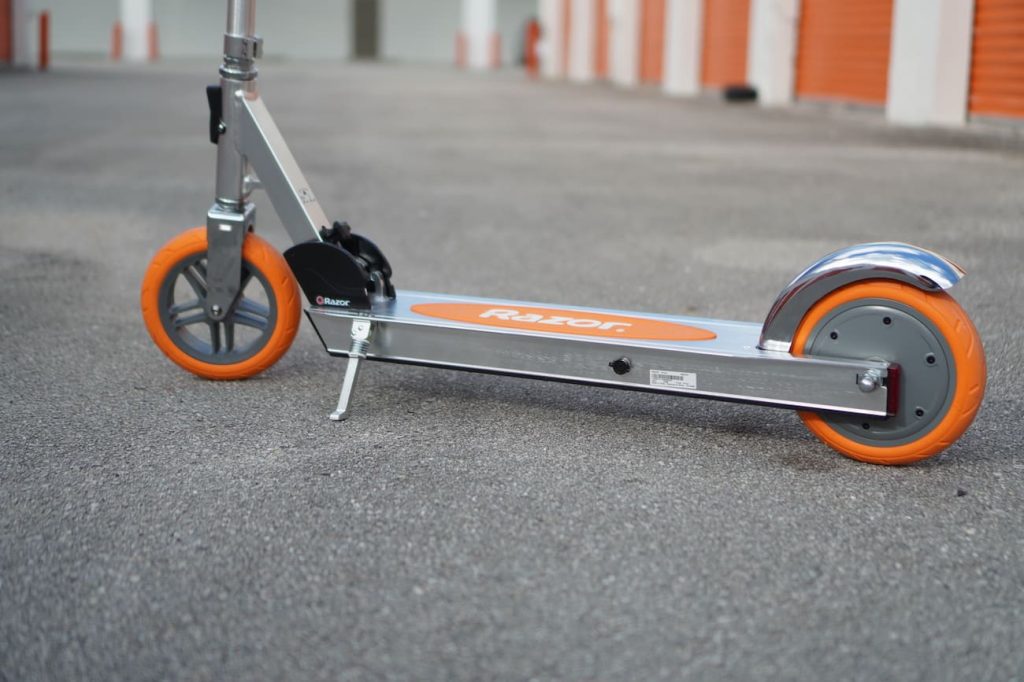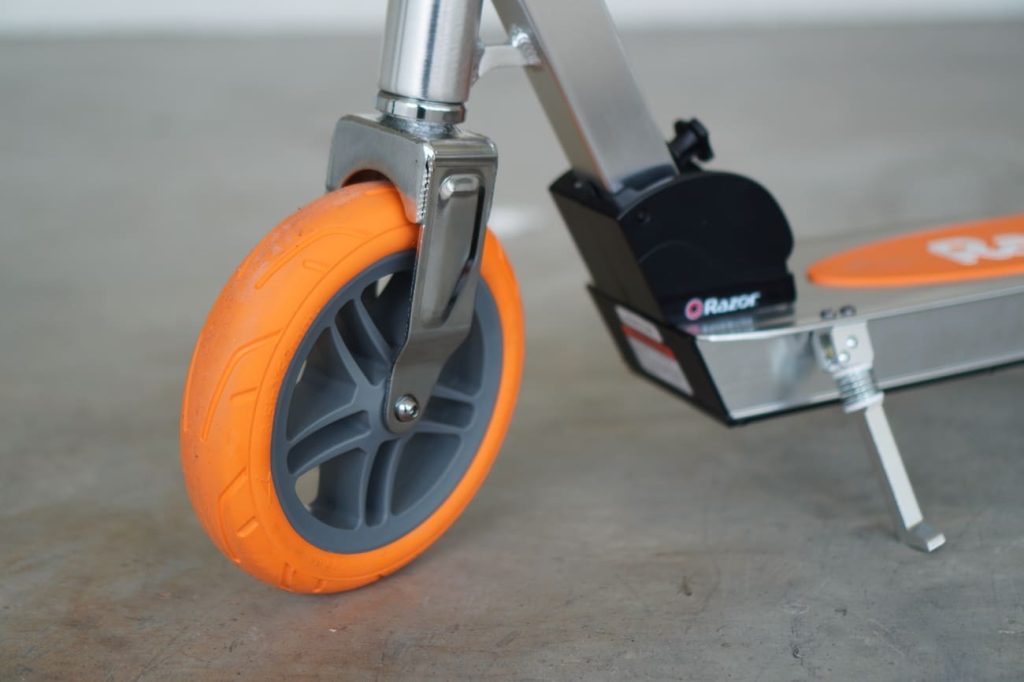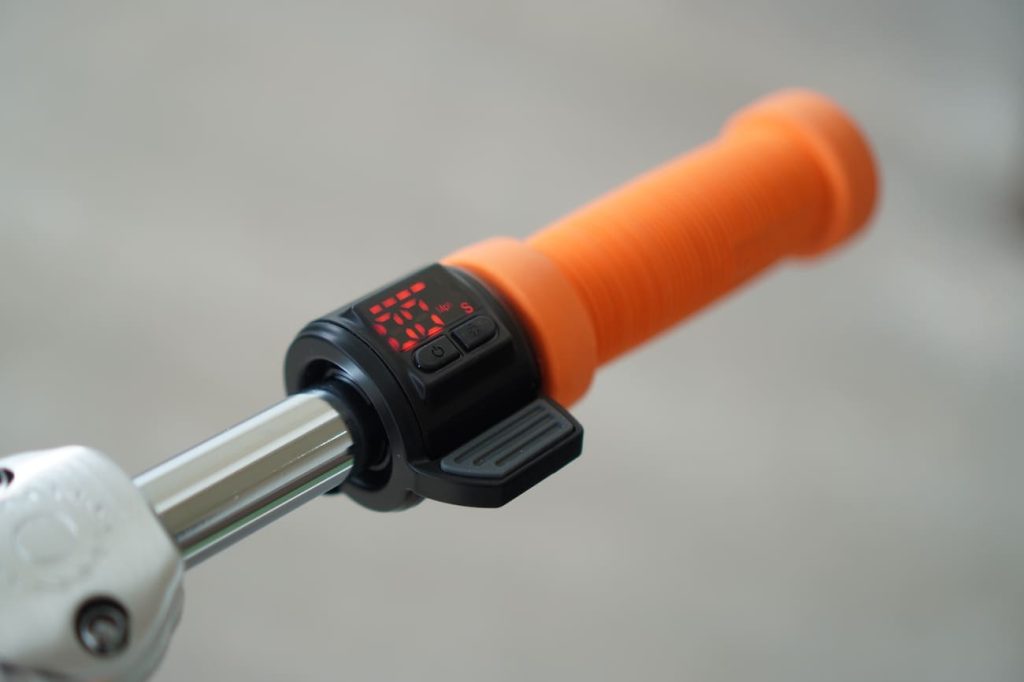
If you’re between the ages of 25 to 50, the name “Razor scooter” likely brings with it a certain nostalgia, the flavor of which may depend on whether you associate it with the childhood freedom of cruising the neighborhood or the unforgettable sound of aluminum on ankle bone. But now both are possible again with a modern twist thanks to Razor’s introduction of an electric scooter based on its classic design. I’ve had some fun by riding, testing, and crashing the new Razor Icon electric scooter over the last few weeks, and now it’s time to tell you what I think.
The Razor Icon certainly does a good job capturing the iconic flair of the original Razor scooter from twenty-something years ago.
The shiny aluminum deck, colorful wheels, minimalist foot brake, and folding stem all harken back to the scooting days of yesteryear.
But at the same time, the scooter carries a number of fun new upgrades that I would have loved to make use of as a kid.
Check out my testing video below to see the Razor Icon in all its orange glory (though other bright colors are also available). Then keep reading for my full review.
Razor Icon video review
Razor Icon electric scooter tech specs
- Motor: 300W rear motor
- Battery: 36V
- Top speed: 18 mph (30 km/h)
- Range: Up to 18 miles (30 km)
- Weight: 26.5 lb. (12 kg)
- Load capacity: 220 lb. (100 kg)
- Brakes: Rear motor braking and rear stomp brake
- Tires: 8.5″ solid tires
- Extras: Front and rear LED lights, LED display with built-in thumb throttle, kickstand, folding stem

Nostalgia on wheels
The Razor Icon electric scooter certainly looks the part of a classic Razor. The only immediate giveaway that this isn’t the same as the scooter gathering dust in your parent’s attic is that the wheels look much larger.
In fact, they’re around twice the size of those original little pucks that Razor called wheels.
These 8.5″ tires may be larger, but they’re equally flat-free. Razor’s original wheels from the early 2000s were hard polyurethane wheels. The Icon at least received a rubber upgrade to make them a bit softer, but the solid rubber still prevents flat tires from ruining your ride.
I wouldn’t want to hit any brick pavers or Zeus-forbid any cobblestone streets, but the wheels feel just fine on smooth bike paths and decent-quality roads.


The rest of the scooter is nearly a dead ringer for the original one, except for all of the electric updates.
That rear motor gets a surprisingly peppy 300W motor. Maybe it just feels so strong because the scooter is quite light (26.5 pounds!) and so you expect it to be a weak little thing. Whatever the reason, the scooter really picks up and moves.
There is one little annoying thing about the motor though, which is that the scooter has to be moving at around 2-3 mph or so in order for the thumb throttle on the handlebars to work. Surely Razor will say that’s a safety feature so that it’s hard for small kids to hop on and ride, or something to that effect. And that might also be true. But it’s really because the motor is sensorless (hall sensors in brushless electric motors are needed to let e-bikes and e-scooters start with good power from a standstill). Sensorless motors are cheaper and have fewer parts to go bad, and so it also surely helps support that fairly low $599 price tag on the Razor Icon (or apparently sometimes even cheaper on Amazon).
I’d have loved for the scooter to simply fly off from a stop when you hit the throttle, since sometimes you have to kick off harder than you’d expect to actually hit 2-3 mph and get enough speed to activate the motor. But it’s something you get used to and so I won’t complain too hard there.

The rest of the scooter is pretty positive from there. For such an inexpensive and lightweight little thing, it works quite well.
The small LED screen isn’t fancy but gives you a good readout of your speed and battery life. There are three speed modes, though I never used anything but the highest speed mode. And the motor braking in the rear wheel is surprisingly powerful. In fact, you may find yourself using the rear foot brake for more gentle stops, since the motor braking comes on quite strong.
I wouldn’t mind a little more grip in the tires, especially after I crashed it in some particularly tight turns (see video above), but I was also pushing this scooter way harder than anyone should normally ride it. These aren’t Pirelli racing tires, as I astutely discovered.





So who is it good for?
Here’s the thing: There are so many electric scooters out there right now. Like so, so many.
Every company has a few models and there are new companies every day. So what makes the Razor Icon special in this sea of scooters?
To be honest, it’s mostly just the look. Don’t get me wrong. The scooter works well. It’s nice and lightweight. It’s decently peppy (for such a lightweight scooter). And it will work just fine for cruising your cul-de-sac, Google campus, or NYC commute.
But the performance isn’t revolutionary and it doesn’t really offer anything you can’t get in another scooter, outside of the awesome design. So if nostalgia is high on your list, the Razor Icon probably should be too. And with a wide range of colors to choose from, you can have that nostalgia served up in just about any flavor.

FTC: We use income earning auto affiliate links. More.





Comments